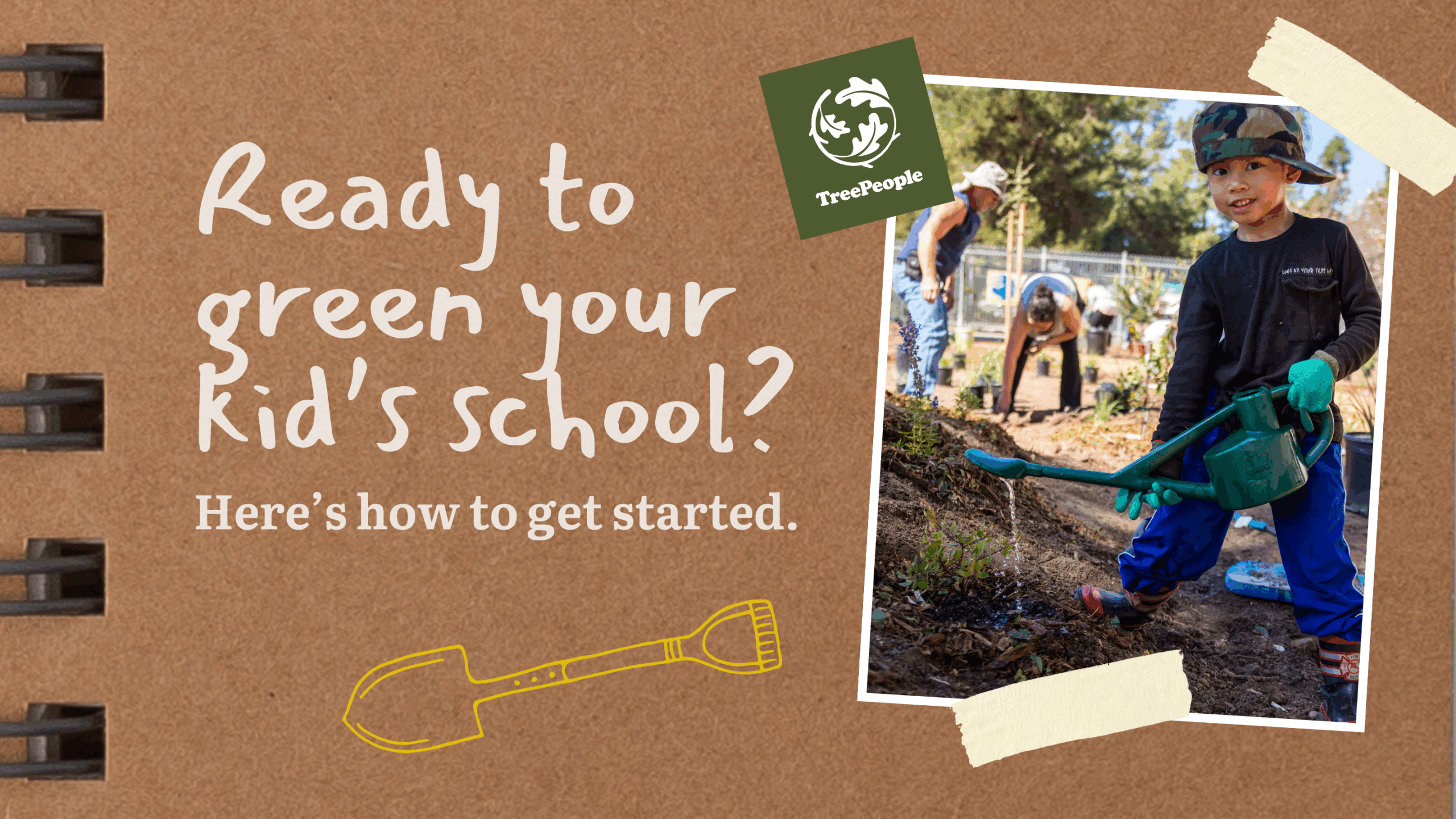No student wants to play on asphalt, but unfortunately, many are forced to learn and play at concrete-covered schools with a severe lack of green space.
Here at TreePeople, our School Greening team wants to see that change—we are currently greening more than two dozen school campuses to create healthier learning environments that will keep students and communities cool and safe for decades to come.
So, how can you start a project like this in your community? Here are a few important steps you can take!

Before you can start a greening project, it’s critical to garner community support for it. This means engaging everyone from school staff members to students and parents, and asking them how the project might be used and what their goals are for it.
Work with the principal and district-level staff to develop a plan and identify sites for your project, and ask students to present their ideas and maintenance plans to the administration. You can also identify partner organizations (like TreePeople!) that offer planning and curriculum support. If you’re interested on working with TreePeople on a project like this, start by filling out our school greening project inquiry.

The next step is ensuring the school has funding to pay for the project. There are several ways you can do this, including applying for local, state, or national grants, hosting a crowdfunding campaign or fundraiser, reaching out to local nurseries for donations, discounts, or volunteer support.
Be aware: depending on the scope and size of your project, this part might take some time and work. But it will be worth it in the long run, making an enormous impact for generations to come.

Now we get to the fun part—determining the kind of project that makes sense for your school. This will depend on the desires and needs the community expressed during the engagement process—trees, habitat gardens, edible gardens, and multi-use gardens can all provide unique and important environmental resources and learning opportunities.
You’ll also need to figure out where your project should go. For outdoor learning environments, choose a site with existing shade or a plan for shade trees, and make sure it gets at least 6 hours of sunlight a day to encourage healthy plant growth. It’s also a good idea to consider sites with existing irrigation or close access to water.

A green schoolyard is a living thing and will need ongoing maintenance to stay healthy and happy. However, the maintenance required will depend on the type of garden you choose to grow—for instance, if you want a habitat garden with native drought-tolerant plants, water use and maintenance requirements should remain low.
To help with maintenance, consider creating an Eco Club or coordinating with the community in your neighborhood to help with planting and maintenance days throughout the year. Selecting a site with a known nearby water source can also help reduce hand watering and infrastructure costs.
Additional Resources
GRANT & FUNDING OPPORTUNITIES
- Whole Kids Foundation Grants
- LAUSD SEEDS Program
- Garden School Foundation
- Enrich LA
- Trust for Public Land
- National Garden Bureau Garden Grant
- Fruit Tree Planting Foundation (FTPF) Orchard Grant
- American Heart Association Teaching Gardens Grant Program
- Big Green Garden Grants
- Captain Planet Foundation Learning Garden Grant
- California Fertilizer Foundation (CFF) School Garden Program
- Herb Society of America Samull Classroom Herb Garden Grants
- National Head Start Association GroMoreGood Garden Grant
- California ReLeaf Grants
- Wild Ones, Lorrie Otto, Seeds for Education Program
SCHOOL DISTRICT GUIDELINES
GENERAL INFORMATION

